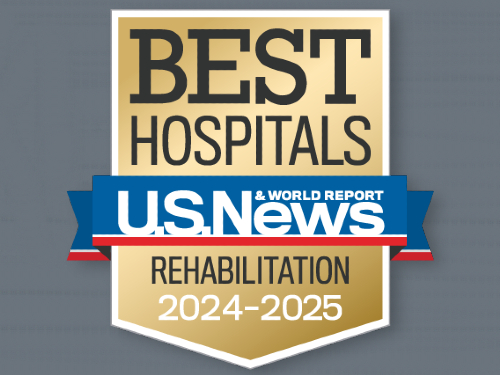Scientific research needs to refocus on causality in order to sidestep traps that may ultimately compromise findings.
Such is the framework put forth by Farhaan S. Vahidy, PhD, MBBS, associate vice president of research and the chief scientific officer at TIRR Memorial Hermann. Dr. Vahidy shared his thoughts on the subject during a recent talk at the National Institutes for Health/National Institute of Neurological Disorders and Stroke (NINDS) National T32 Workshop, which was held June 26- 28, 2024, in Omaha, Neb.
T32 grants, which are awarded by NINDS, are given to institutions that demonstrate excellence in providing mentorship, guidance and training across different domains of neurologic diseases and stroke. As such, the audience for the presentation consisted of principal investigators and project directors who have received T32 grants, and trainees who are being funded through the program.
“It was important to talk to this audience about causality in relationship to the rigor and reproducibility that is fundamental to experimental design, collection of data, statistical analyses and logical reasoning when we are doing research,” Dr. Vahidy says. “Research is integral to the mission of TIRR Memorial Hermann, where research goals are represented by the acronym R.I.S.E.— research, innovation, service and policy, and education and training. Conducting research, pushing the boundaries of innovation, servicing community and developing and training the scientists of tomorrow all go hand in hand. What we are doing today has a legacy to be carried forward. Therefore, being very methodical and deliberate in empowering tomorrow’s researchers is critical.”
Dr. Vahidy’s message to those engaged in the next generation of scientific research is clear: Lack of focus and clouding of goals can threaten success, which may mean research outputs and publications fail to advance the medical field.
“At the end of the day, we strive to elevate the conditions of human existence,” Dr. Vahidy notes. “The adage ‘association is not causation’ is ubiquitous in the scientific community.”
As result, there is a belief among some researchers that “if you have certain weaknesses in your design or limitations in the way you conducted your research, you can always state such limitations and move on,” he adds.
Currently, according to Dr. Vahidy, the “association is not causation” adage gets leaned on too frequently.
“If we knowingly or unknowingly deviate from principles of rigor and reproducibility because we have given ourselves the leverage of not addressing causation, [the result] is information in the world of scientific literature that does not really move science forward.”
Many factors can contribute to this challenge, including the need to conduct research in order to justify additional funding for a program.
“That is important,” Dr. Vahidy explains. “But it’s not the primary purpose of why we do the things we do. We need to be relentless in our pursuit of causality.”
As an example, Dr. Vahidy cites the work of Sir Austin Bradford Hill, who is famous for his seminal study linking cigarette smoking with lung cancer. In 1965, Dr. Hill proposed nine viewpoints intended to establish epidemiological evidence of a causal relationship between a presumed cause and an observed effect. These nine viewpoints—strength, consistency, specificity, temporality, biological gradient, plausibility, coherence, experiment, and analogy—provided the scientific community with a framework for evaluating epidemiologic evidence to determine if causation can be deduced.
Conversely, according to Dr. Vahidy, many scientific studies published today focus on p-values, an ofteninsufficient criterion for determining causality. This behavior led the American Statistical Association to issue a statement in 2016 aimed at steering research into a “post p < 0.05 era.”1
In some cases, “a p-value of less than 0.05 has become the sole criterion for claiming that we have discovered something meaningful,” Dr. Vahidy says.
Addressing this issue, as well as focusing on quantitative reasoning in order to understand study design, biases and validation of measurements, is essential to frame future research and ensure that as many scientific inquiries as possible will meaningfully improve the state of human existence.
“Every research enterprise has a mission to train the scientists and investigators of tomorrow,” Dr. Vahidy explains. “It’s incumbent on us to do this right and to do it responsibly.”
Reference
1American Statistical Association. Statement on Statistical Significance and P-Values.” https://www.amstat.org/asa/files/pdfs/p-valuestatement.pdf
